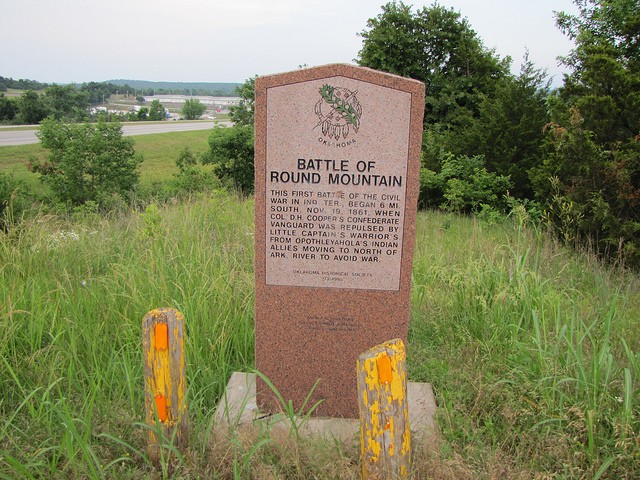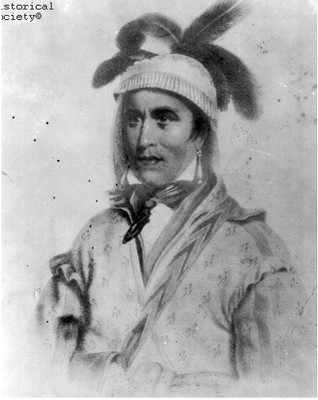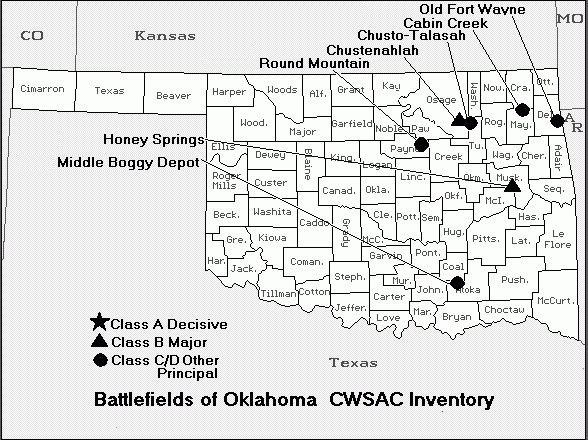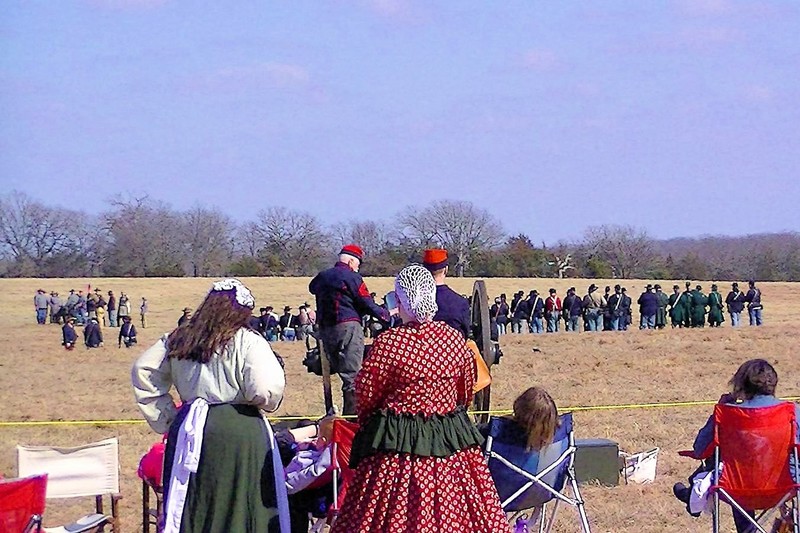Location of the Battle of Round Mountain
Introduction
Text-to-speech Audio
Images
The marker placed to commemorate the battle, near Mannford, Oklahoma.

This is a picture of Chief Opothleyahola.

Map of Oklahoma highlighting battlefields from the Civil War.

Picture of the Battle Re-enactment in Yale, Oklahoma.

Backstory and Context
Text-to-speech Audio
The Battle of Round Mountain occurred on November 19, 1861 in Oklahoma during the American Civil War. It was under the campaign titled Operations in Indian Territory and occurred after Colonel Douglas H. Cooper, the Confederate commander of the Indian Department, was unable to reconcile differences with Chief Opothleyahola, who was the commander of a band of Unionist Creeks and Seminoless. Colonel Cooper and his 1400 men were on the offensive side and set out to either “compel submission” or drive the Indians out. When they arrived at the Chief’s camp, it was deserted, but then Cooper learned that the Indians had built another fort at the Red Fork of the Arkansas River. They arrived and found yet another deserted camp. A few of Colonel Cooper’s men found several stragglers nearby and followed them into the actual Indian camp where they immediately attacked, resulting in Chief Opothleyahola retreating back to their camp. The next morning, the Confederates claimed victory after finding that Chief Opothleyahola had left the area.
After the Civil War started, Natives began to decide which side they would support. The majority of the Indians allied with the Confederacy but some joined the Union, including the Upper Creek Indians led by Opotheyahola. The purpose of this battle was to prevent the Chief and the Creek Nation, Union supporters, from fleeing Indian Territory to Kansas, which was under the protection of the Union. This goal was the ideal behind the Trail of Blood on Ice campaign. The clear victors were the Confederates since they were able to complete this task. This campaign and battle were fought near the beginning of the Civil War, since it officially began only a few months before this battle.
As stated before, this was the first battle of the Trail of Blood on Ice campaign, which continued as a series of battles in the winter of 1861-62. This trail was the name of the harsh journey the Indian warriors took as they withdrew to Kansas, similar to the Trail of Tears. They suffered from exposure to the elements and diseases with nearly 2000 of them dying on or shortly after the journey to Fort Row, Kansas.
Today, much controversy and debate surrounds the location of the battle. There are two main locations that are the leading choices, one being near the present day town of Yale, Oklahoma, and the other being close to the former site of Keystone (which is now submerged under Keystone Lake). Evidence has been found to argue for both sites, but the fact that one of the locations is submerged under Keystone Lake has allowed for less research in that area. There is a marker placed near Mannford, Oklahoma to commemorate the battle, but reenactments of the battle take place throughout Oklahoma to relive the history and educate today's youth of aspects of the Civil War.
Sources
Opothleyahola. Joseph Thoburn Collection, Oklahoma Historical Society.
Chad Williams, "Round Mountain, Battle of," The Encyclopedia of Oklahoma History and Culture, https://www.okhistory.org/publications/enc/entry.php?entry=RO035.
Josh Rabe. "Re-creating the Battle of Round Mountain; Lessons go beyond the history books; Sailor leaves one war to fight another one.". The Oklahoman (Oklahoma City, OK). February 17, 2007 Saturday. https://advance-lexis-com.ezproxy.lib.ou.edu/api/document?collection=news&id=urn:contentItem:4N3G-FX80-TWD7-X2M1-00000-00&context=1516831.
"Battle Summary: Round Mountain, OK." National Parks Service. Accessed March 08, 2019. https://www.nps.gov/abpp/battles/ok001.htm.
Latham, K., and Blog Oklahoma. "Exploring Oklahoma History / Battle of Round Mountain." Exploring Oklahoma History. Accessed March 28, 2019. http://blogoklahoma.us/place.aspx?id=774.
